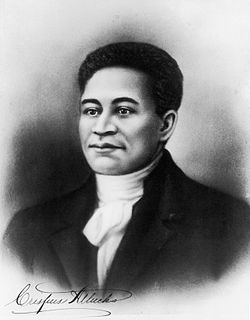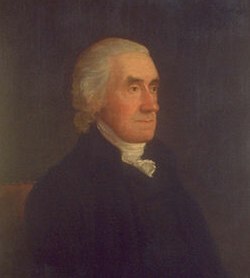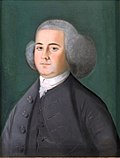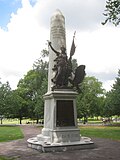Boston Massacre
The Boston Massacre happened when five civilians (people who were not in the military) were shot and killed by 9 British soldiers on March 5, 1770.[1] It was in Boston, Massachusetts, which was a British colony at the time. The event happened at night when a large mob got together outside of the Custom House. One British soldier named Hugh White had hit a boy who had insulted his commanding officer. The boy ran away and came back with a large mob of angry people. More British soldiers came to help protect Hugh White from the people. The mob threw snowballs with clams inside them and hit them with wooden clubs. As the mob got larger and larger the scene became more and more chaotic. Someone in the crowd yelled "fire". In the confusion, some of the soldiers fired into the crowd. Crispus Attucks, an African-American man, was one of the first people killed.[2]
| The Boston Massacre | |
|---|---|
 Engraving of the Massacre by Paul Revere | |
| Location | Boston, Massachusetts Bay Colony, British America |
| Date | March 5, 1770 |
| Attack type | Shooting |
| Deaths | 5 |
| Injured | 7 |
| Perpetrator(s) | British Army |
Trial
Eight British soldiers went to court after the Boston Massacre. Only two of them, Hugh Montgomery and Matthew Killroy, were found guilty of manslaughter in court. Their punishment was to have the palms of their hands branded (have their palms marked with a burn). John Adams was the lawyer who defended the British soldiers. He knew that many people would be upset with him for defending the soldiers, but he believed that everybody deserved a fair trial.[3] (Adams would later become the President of the United States).
After the Boston Massacre
Paul Revere, a man who worked with metals in Boston, made an engraving of the British soldiers shooting into the crowd, depicted as violent. Many people saw the engraving and became angry. A few years later, the American Revolution started, and the colonies would become an independent country, the United States of America.
Photo gallery
- Hover over each photo to view label detail
Portrait of what Crispus Attucks may have looked like
Obituary of Massacre victim Patrick Carr, published on March 19, 1770, with an engraving of his coffin by Paul Revere
Robert Treat Paine, a signer of the Declaration of Independence, prosecuted the British soldiers
John Adams defended the accused British soldiers
Lithograph from 1856 focusing on Crispus Attucks, who had by then become an important symbol for abolitionists.[4]
A gray brick circle now marks the site of the Massacre, in front of the Old State House
Boston Massacre Media
A grave marker for the Granary Burying Ground in Boston, where those killed in the Boston Massacre were buried
John Adams defended the soldiers, six of whom were acquitted.
The Boston Massacre Monument, built by Adolph Robert Kraus, on display in Boston Common since 1889
References
- ↑ "Boston Massacre". Boston Massacre Historical Society. Retrieved March 3, 2010.
- ↑ "Africans in America/Part 2/Crispus Attucks". pbs.org. Retrieved November 17, 2010.
- ↑ "Key Figures in the Boston Massacre Trial". law.umkc.edu. Archived from the original on January 27, 2011. Retrieved November 16, 2010.
- ↑ O’Connor, Thomas H. (March 16, 2001). The Hub: Boston Past and Present. Northeastern. p. 56. ISBN 978-1555534745.









